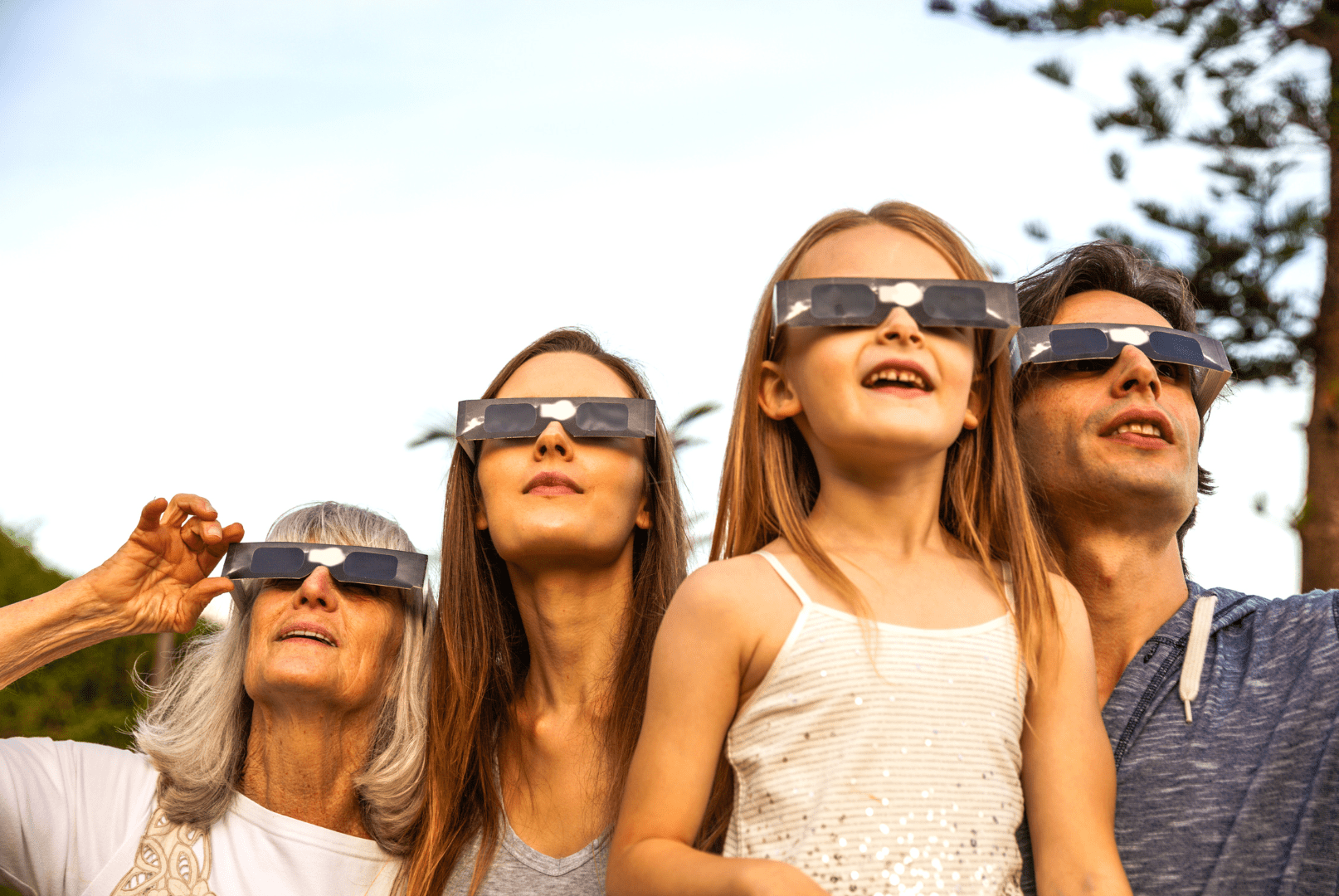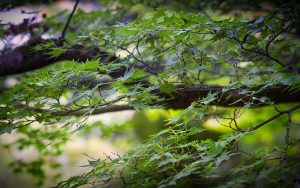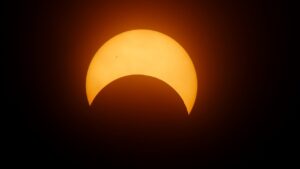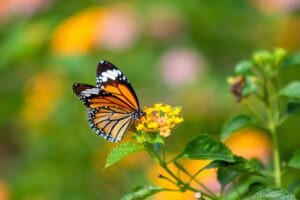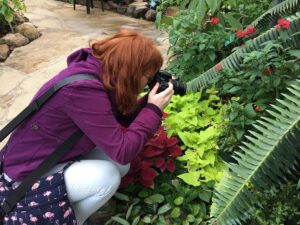The total solar eclipse is only days away, and the Garden is in overdrive preparing for this incredible opportunity. Our education team–and the great science educators at the Fort Worth Museum of Science and History–are preparing multiple fun and educational activities for children and families on April 8.
You can get a jump-start and start building excitement at home this week with some ideas from the Garden. “The eclipse will be an unforgettable experience for kids, no doubt about it,” says Vice President of Education Tracy Friday. “But by mixing in some science facts and activities, you can spark a life-long appreciation for the wonders of nature.”
Safety first!
The most important thing to tell kids about the eclipse: Don’t look at the sun EXCEPT during the brief total eclipse phase. Insist that children WAIT until instructed to remove their glasses.
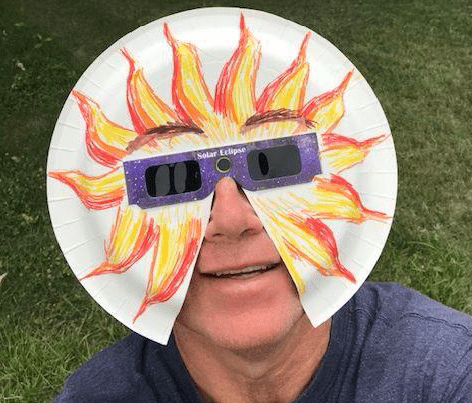
Looking directly at the sun can cause serious, even permanent eye damage. Make sure that you have eclipse glasses or eclipse binoculars–specifically those that that meet the ISO 12312-2 international standard. (The Garden will have glasses for sale for $3 while supplies last.) Inspect your glasses to make sure they have no scratches or other damage.
Make sure you supervise younger children–or add extra protection by creating a face screen out of a paper plate and some string. The screen will make it harder to look outside of the lenses on eclipse glasses, and can even be decorated for the occasion. For even greater security, fasten a string, ribbon or rubber band to the edges of the screen to fasten around your child’s head. You can find directions on how to make the screen from NASA.
You can also view the eclipse safely by making a pinhole viewer. One of the Garden’s stations on April 8 will guide kids and families through making their own viewer as well as using other household objects. You can also make a viewer ahead of time with instructions from the Fort Worth Museum of Science and History included in their Educator Guide, which is free to download.
Tips for Children with Developmental Disabilities
Families of autistic children or kids with other developmental disabilities know that taking a few extra steps before an event can help their family better enjoy it. The total solar eclipse will be a unusual day for kids, full of new and unexpected happenings–the sun will actual vanish from the sky!
The Autism Society of Texas has prepared a resource guide to help families prepare for the eclipse. They recommend preparing kids for what will happen, having a practice run of trying out eclipse glasses, and using a social narrative to walk them through the event. The guide is available in both English and Spanish.
The Science Behind the Eclipse
The orbits of the earth, moon and sun have been called a celestial dance. To help kids understand how this dance produces a dark shadow across the earth, you can refer to a brief but thorough explanation of the dance moves of the various partners.
In the run-up to the eclipse, the Garden education team will have a station for kids to play Sun, Moon and Earth Dress-up. They’ll be able to visualize the movements of these bodies by acting out the celestial dance themselves while dressed up as their favorite member of the solar system.
If you can’t make it on eclipse day or want to get a head start, McGraw Hill has instructions for modeling an eclipse using simple balls and a flashlight.
Read All About It
Another great way to plan for the eclipse is read about it as a family. The Baylor School of Education has put together a guide to children’s books about eclipses.
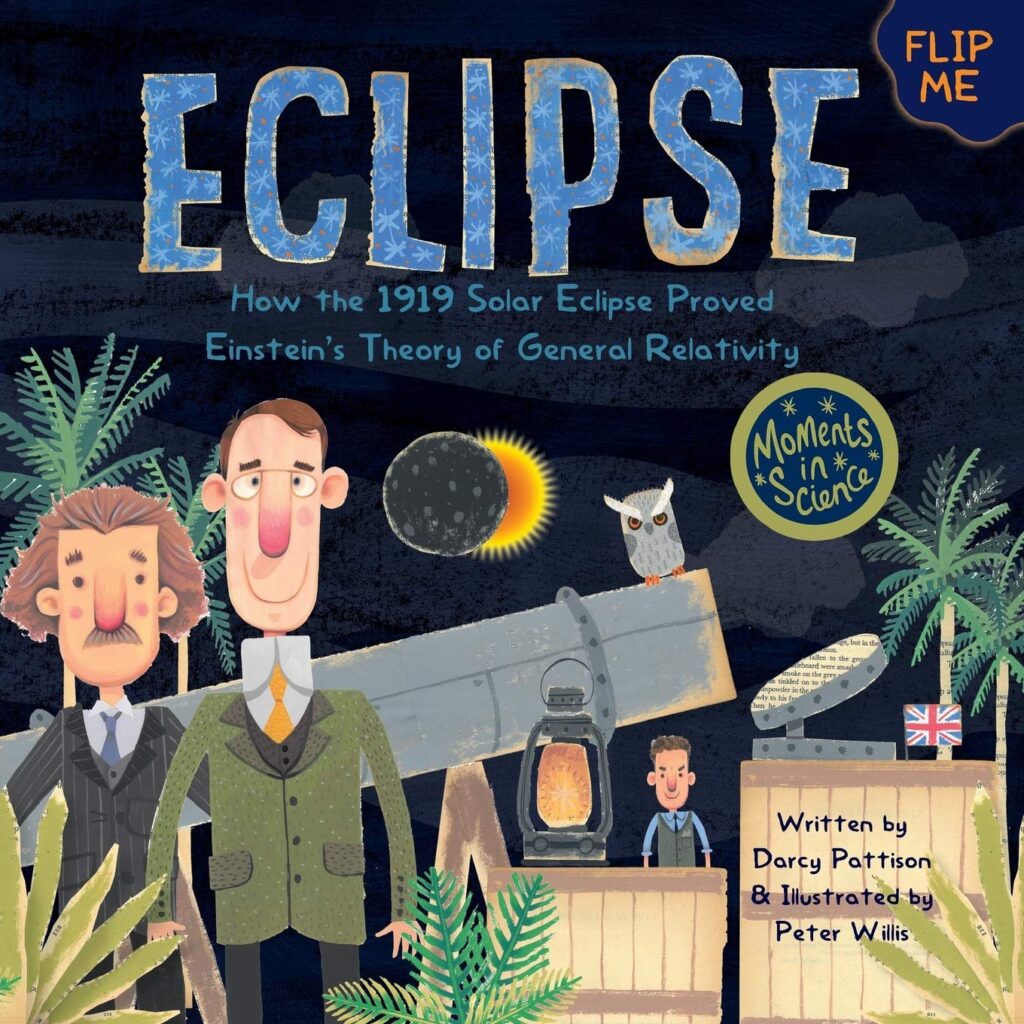
One they suggest for children in preschool through 3rd grade is A Few Beautiful Minutes by Kate Allen Fox, a descriptive picture book about the wonders of the phenomenon.
Older elementary age children will likely enjoy Eclipse: How the 1919 Solar Eclipse Proved Einstein’s Theory of General Relativity Moment in Science. This book explains how British scientist Arthur Eddington journeyed to a remote island off of Africa to photograph a total solar eclipse in 1919 in order to prove Einstein’s new and untested Theory of Relativity.
Planning for April 8
Tickets are still available to view the total eclipse at the Garden, where our wide open North and South Vistas offer uninterrupted views of the sky. As well as the dress up and pinhole viewer activities already mentioned, other kid-friendly activities planned at the Garden include:
- Solar Critters – Make your own eclipse-viewing pal with UV-reactive beads that change color in the sun.
- Moon Bag Toss – Enjoy some friendly competition as you try to eclipse the sun with moon bean bags.
- Shadow Tracing – Explore the interplay of light and form as you create unique silhouette art pieces.
- Sun Song Scavenger Hunt – Listen for the sun songs and exchange your card for a prize!
- Light Probes – Measure how the light changes over the course of the eclipse with light probes from Texas Instruments.
Guests are also invited to walk to the Museum of Science and History, which is partnering with the Garden for this event. Museum and Botanic Garden members receive free reciprocal admission for the day. Family activities on the lawn outside of the Museum will include Telescope Exploration, Sunshine Shenanigans, Chalk Play, and Ice Orbs.
We can’t wait to see you and experience together the wonder of the eclipse at the Garden.

